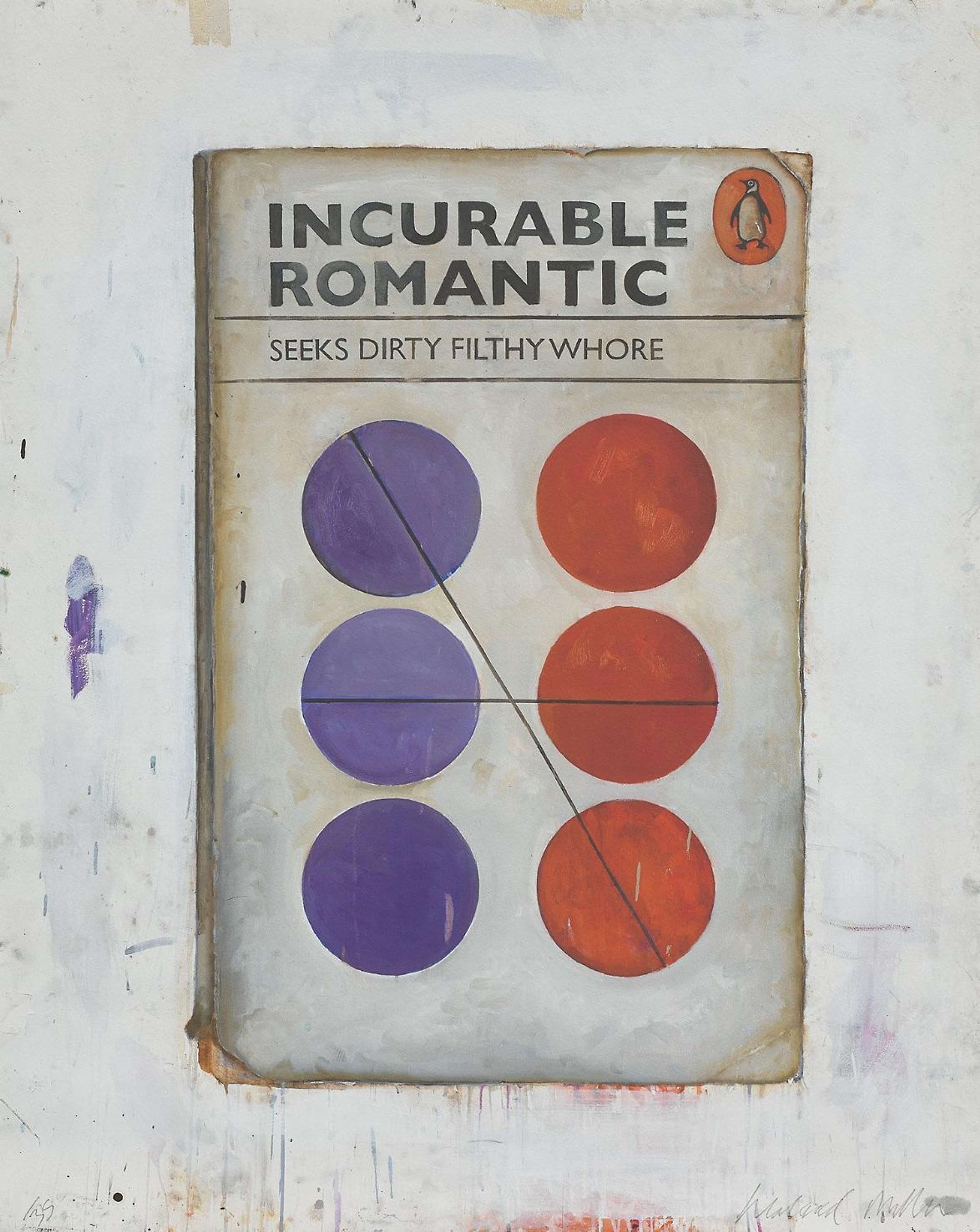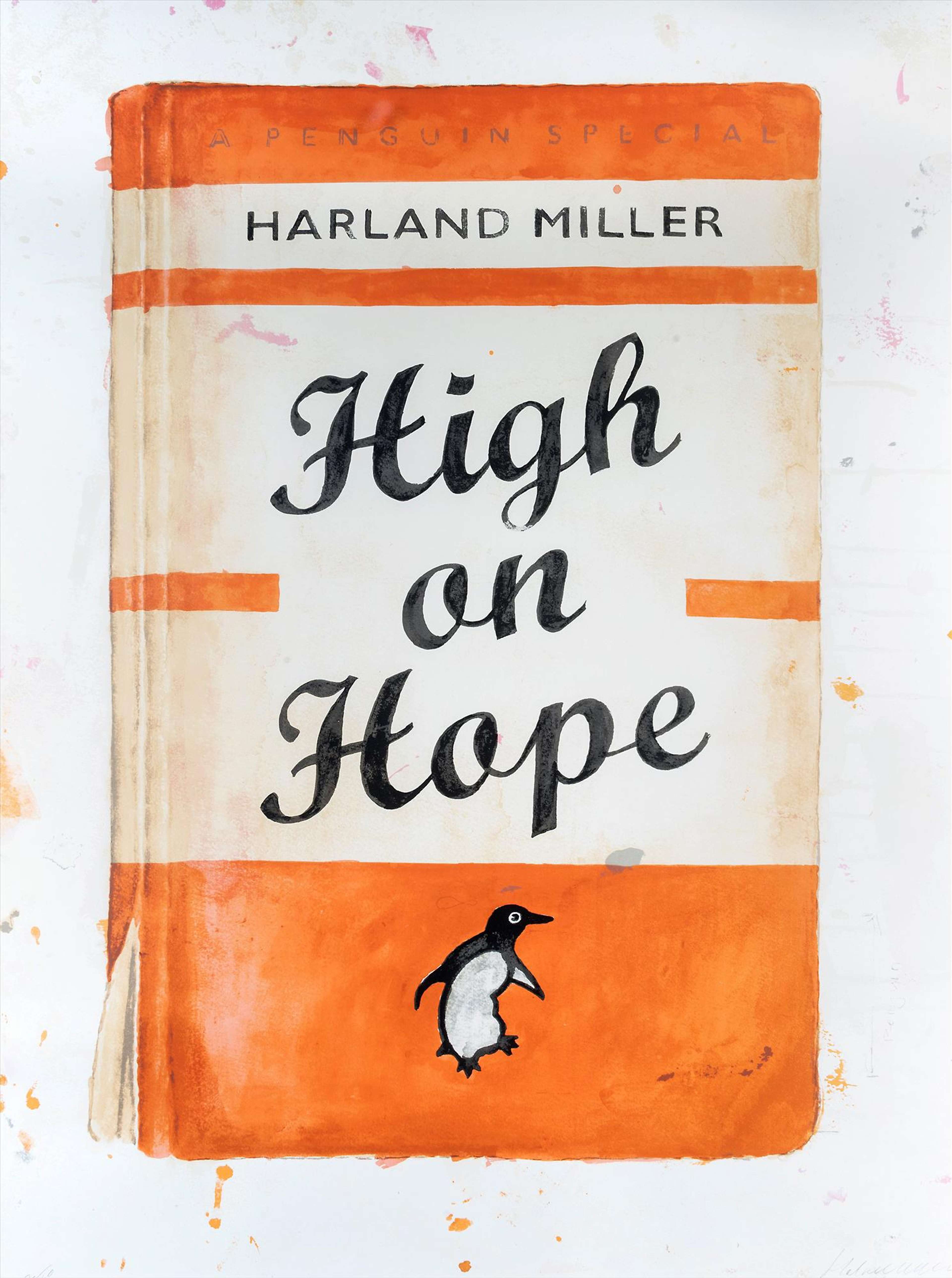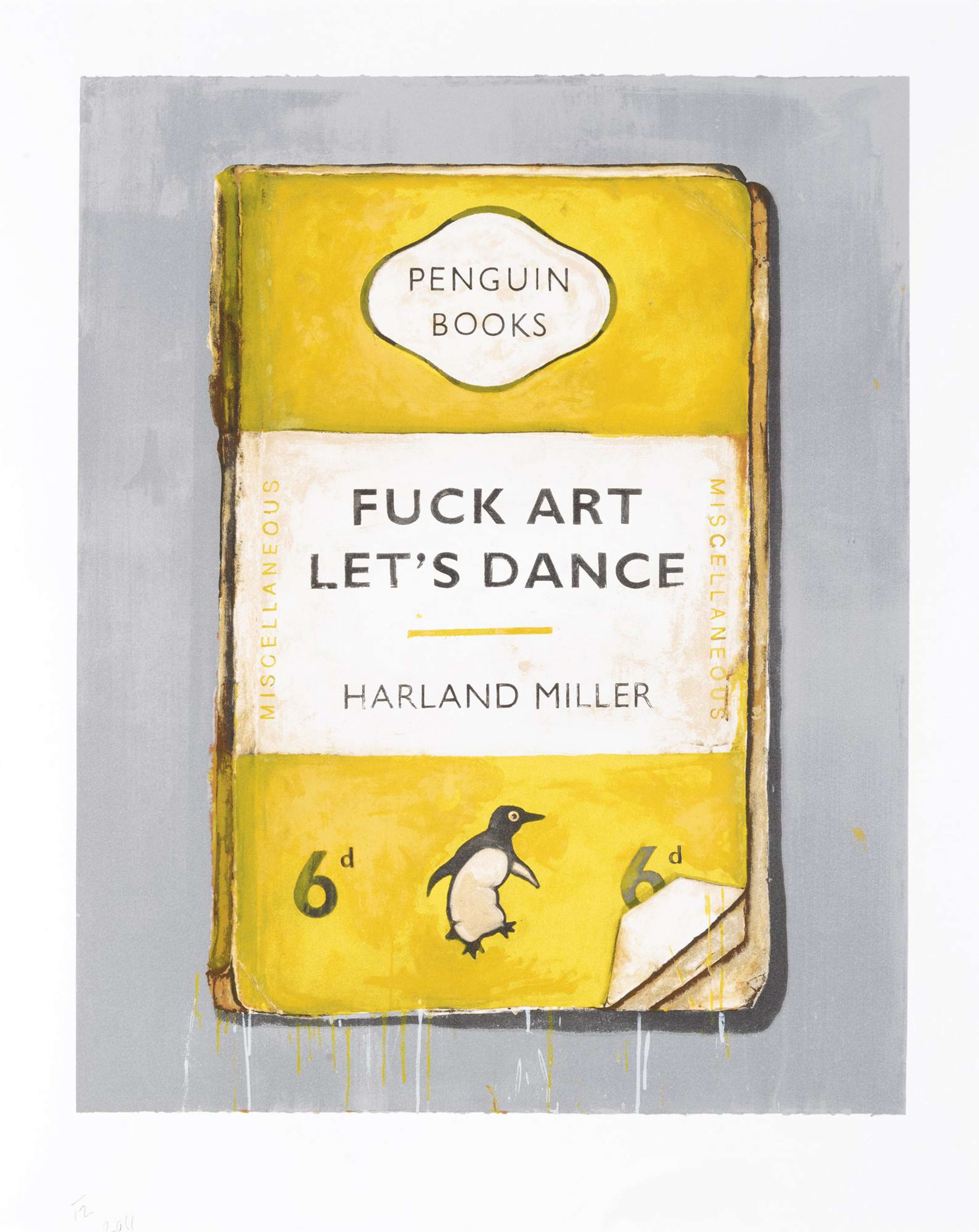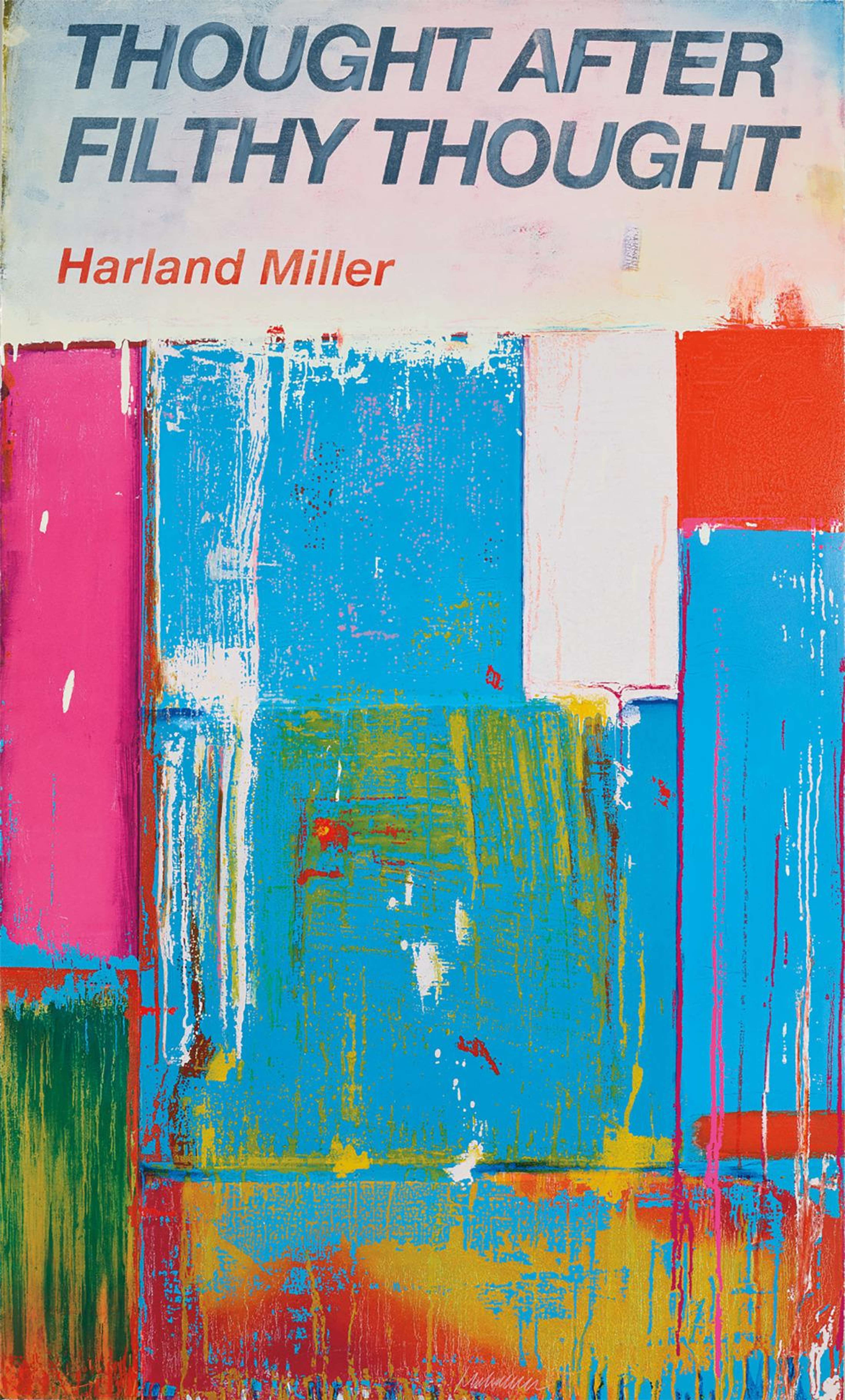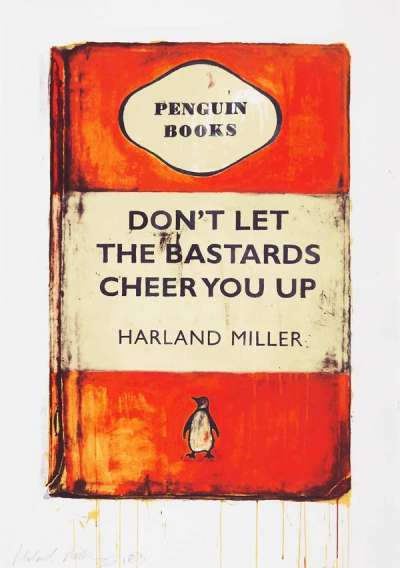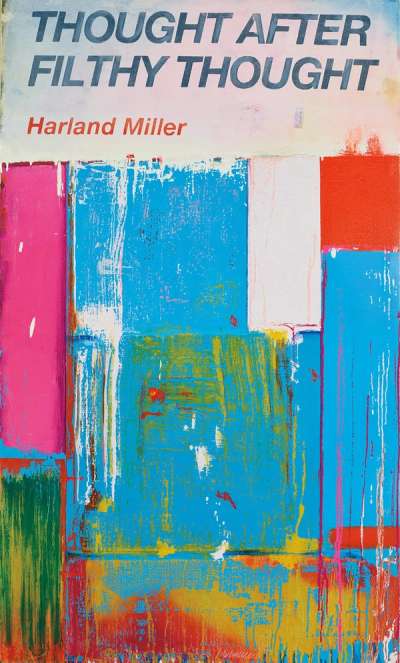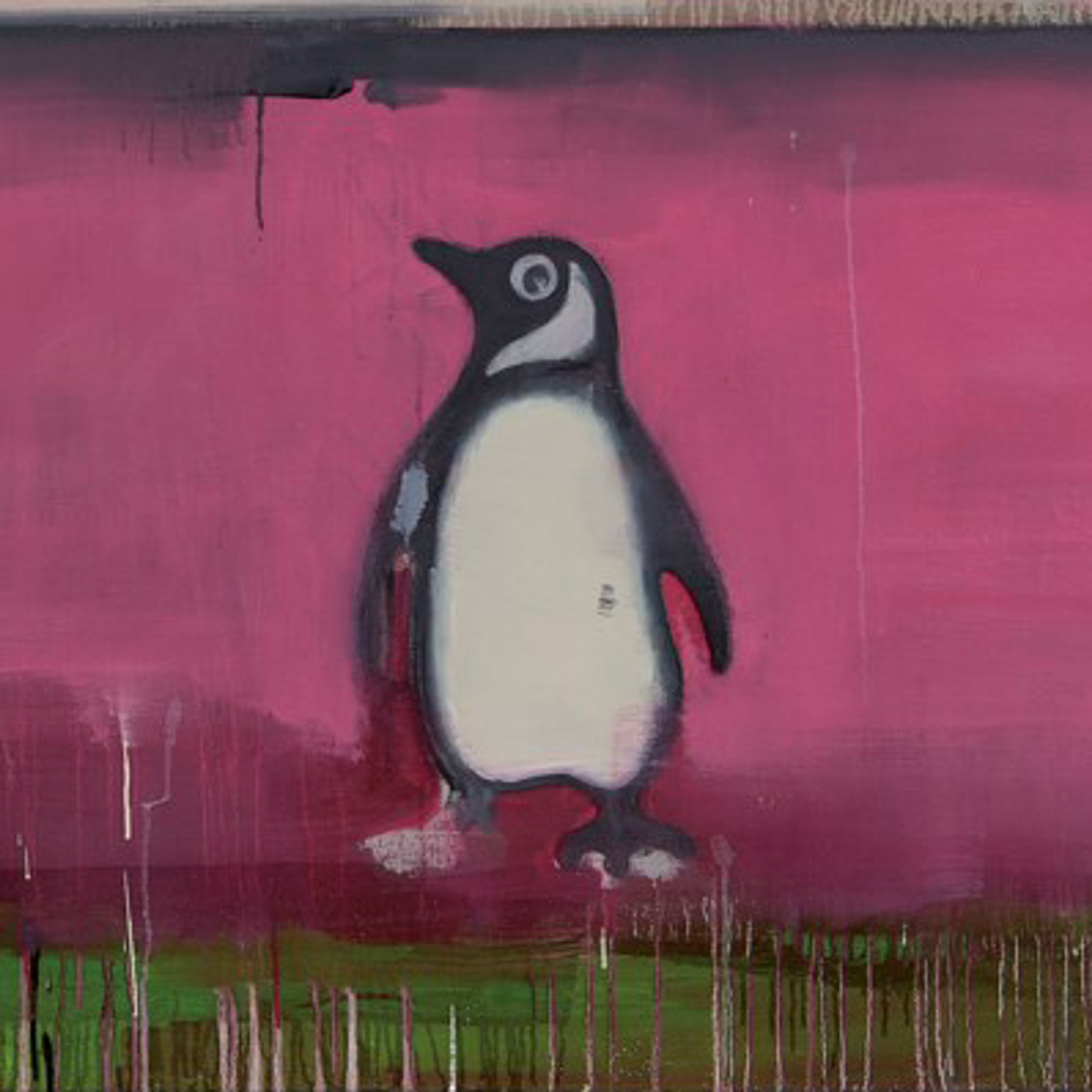Harland Miller: More than Words, More than Image

 Don't Let The Bastards Cheer You Up ⓒ Harland Miller 2009
Don't Let The Bastards Cheer You Up ⓒ Harland Miller 2009
Interested in buying or selling
Harland Miller?

Harland Miller
61 works
Harland Miller prints play on the relationship between word and image. An artist who topples and uproots our ideas of ‘high’ and ‘low’ art, Miller is best known for his reimagining of classic Vintage Penguin book jackets.
Injected with satire and attitude, these large scale works toy with our visual and literary memory, forcing us to question what could lie beyond the surface of these irreverent, naughty reimaginings.
Miller has had a career as both an artist and author. In 2000, he published his debut novel, Slow Down Arthur, Stick to Thirty (Harper Collins), its themes evolving to underscore Miller’s visual work. Miller’s interplay between word and image creates shrewd critiques of popular culture and the distinction between high and low art forms.
Penguin Covers
Perhaps his most notorious series, Miller’s Penguin Covers reimagine the titles of some of his favourite authors, Edgar Allan Poe and Ernest Hemingway among their ranks. Miller transforms their once serious covers into humorous and sarcastic one-liners, hiding dark layers of meaning beneath the titles.
The world that Miller invokes is one of capitalist grasping, violent sex and drug abuse. Prints like “Death What’s In it For Me?” is typically Miller-esque in its ruthless satire of modern self absorption. “Heroin, It’s What Your Right Arm is For” captures the theme of drug abuse that is woven throughout Miller’s ouvre.
Despite his tendency towards morbidity in his works, Miller remains humorous. It is hard not to giggle at paintings like Incurable Romantic Seeks Dirty Filthy Whore, where Miller uses the full visual potential of the book cover to shock us with his brazen level of cheek. He relies on the recognizable format of the Penguin cover to imply a level of literary prestige that the reader can trust, whilst the text itself belies that trust with its ironic slogans.
Pelican Psychology
Miller has also played with Penguin’s ‘Pelican’ collection, a series of sociological studies published after the Second World War.
Despite their more factual and prosaic titles, Miller argued that he could read a lot of ‘unintended poetry’ in these covers. So, we get works like Happiness The Case Against (2017) or Armageddon Is it too much to ask? (2017) offering us an ironic take on the non-fiction book cover.
An important element of Miller’s art is what happens in front of the canvas, in the mind of the viewer, as they are left to imagine the content of the book themselves. The artist describes these paintings as “suggestive of a narrative” and he is not wrong - through his inimitable command of language, we find ourselves wondering what could possibly be contained within these imagined pages.
Harland Miller and Pop Art
In terms of visual influences, Miller himself has described the Abstract Expressionist movement as having a key role in his work, and we see this in his Rothko-like use of flat colour planes across his large scale works.
More stark however, is Miller’s play with mass culture that pinpoints Pop Art as being a crucial influence here too. Pop Art is characterized by advertising, pop music and comic books. Like the works of Andy Warhol or Roy Lichtenstein, Miller transcends the boundary between “low” and “high” culture by making Penguin covers the canvas for his work. The Penguin paperbacks were famously created by Allen Lane to “sell for a sixpence” throughout high street shops in order to bring high quality fiction to a mass market. Working within the Pop Art tradition, Miller plays on his knowledge of the literary market to create paintings fit for a gallery out of media from the everyday, like Warhol and Lichtenstein before him.
Pop Art’s fascination with consumerism is also visible here. Parallel to the work of Warhol, Miller’s reproduced prints – much like the books they reinvent – are transformed into consumable objects. Just like entering a bookshop to purchase a copy of a Penguin Classic to add to your shelf, a Miller print is to be bought and added to a collection, toying with our idea of what it means to accumulate art and how to exhibit it.
Reading a Work of Art
What sets Miller’s work apart is the relationship he creates between word and image. In his book jackets, the artist himself acknowledges that the text carries “more weight than the painting” - which urges us to read his art, rather than simply look at it.
These works lead us away from a purely visual way of looking, leaving us instead with the mental images Miller conjures through his playful literary satire. By placing words at the centre of his artwork, he breaks down the boundaries between literature and art as separate disciplines, instead combining them to turn cultural hierarchies on their head.
